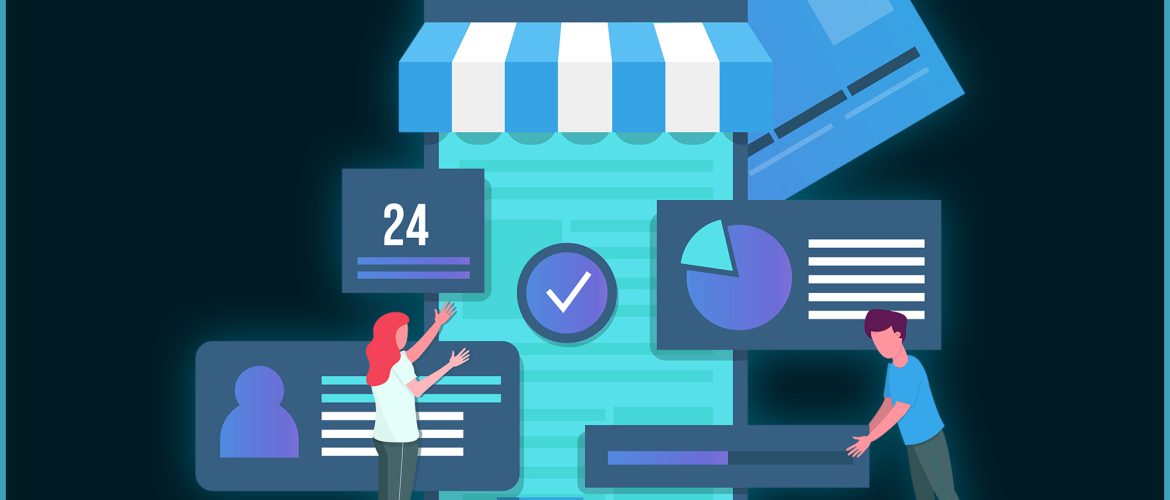The world of ecommerce is booming! From household essentials to handcrafted jewelry, there’s something for everyone online. But have you ever wondered how these online stores function? There are different ecommerce business models at play, depending on who’s buying and who’s selling. Let’s delve into the most common types of ecommerce businesses:
Business-to-Consumer (B2C)
This is the classic model you’re probably most familiar with. Businesses sell directly to individual consumers. Think online retailers like Amazon, clothing stores like Nike, or even grocery chains offering home delivery. This ecommerce business model relies heavily on user-friendly websites, effective marketing, and a smooth customer experience to keep shoppers coming back.
Here, B2C businesses can further specialize. Subscription box services, for example, curate and deliver products to customers on a recurring basis, catering to specific interests like beauty products, pet supplies, or even healthy snacks. Flash sale websites offer limited-time deals on designer clothing or high-end electronics, creating a sense of urgency and exclusivity for bargain hunters.
Business-to-Business (B2B)
Here, businesses sell products or services to other businesses. This could involve raw materials, office supplies, or even software solutions. B2B transactions often involve larger quantities and more complex buying processes. Efficiency and reliability are key factors for B2B businesses, as they focus on building strong relationships with their corporate clients.
This ecommerce business model’s platform is designed specifically for B2B transactions can streamline the buying process for both parties. These platforms often offer features like secure payment gateways, bulk ordering options, and real-time inventory tracking. Additionally, some B2B businesses operate through a drop shipping model. They don’t hold any inventory themselves but act as a middleman, connecting manufacturers directly with retailers. This allows B2B businesses to offer a wider variety of products without the overhead costs of warehousing and managing physical stock.
Consumer-to-Consumer (C2C)
In this ecommerce business model, individuals sell directly to other consumers. Popular online marketplaces like eBay or Etsy fall into this category. C2C platforms provide a space for people to sell used items, handcrafted goods, or anything else they no longer need. Trust and security are important aspects for C2C platforms, as they need to ensure a safe and smooth transaction experience for both buyers and sellers.
Social commerce is a recent development within the C2C model. Platforms like Instagram and Facebook allow individuals to sell products directly through their social media profiles. This leverages the power of social media influencers and allows sellers to tap into a wider audience with minimal setup costs.
Consumer-to-Business (C2B)
This is a bit of a flip on the B2C model. Here, individual consumers offer their skills or services to businesses. Think freelance writers, graphic designers, or even social media influencers selling sponsored content. This ecommerce business model C2B connects businesses with a pool of talent and allow consumers to monetize their skills.
The rise of the gig economy has fueled the growth of C2B platforms. Freelancers can now find project opportunities and connect with clients from all over the world. This ecommerce business model offers flexibility and work-life balance for individuals, while businesses can access a wider talent pool without the commitment of hiring full-time employees.
Direct-to-Consumer (D2C)
D2C is a variation of the B2C model where brands cut out the middleman and sell directly to consumers through their own online stores. This allows them to control the brand message, pricing, and customer experience. Many popular clothing brands and makeup companies have adopted the D2C approach in recent years.
Subscription services are also a popular D2C strategy. Companies can offer recurring deliveries of their products, building customer loyalty and creating a predictable revenue stream. Businesses using this ecommerce business model brands often leverage social media marketing and influencer partnerships to reach their target audience and build brand awareness.
Business-to-Government (B2G)
This ecommerce business model involves businesses selling goods or services directly to government agencies. This could include anything from office supplies to software solutions or even military equipment. B2G transactions typically follow strict regulations and bidding processes.
Conclusion: Navigating the Diverse Landscape of Ecommerce Business Models
Understanding these different ecommerce business models can help you decide which approach might be right for your own business idea. Whether you’re a seasoned entrepreneur with a unique product to sell or a skilled freelancer looking to offer your services online, the exciting world of ecommerce offers a plethora of opportunities! With careful planning, the right platform, and a strategic approach, you can navigate this dynamic landscape and carve out your own niche in the ever-evolving world of online commerce.
Having partnered with numerous clients, we at BrandJaws witnessed firsthand the transformative power of tailored ecommerce platforms. By understanding various ecommerce business models, we’ve enabled entrepreneurs to flourish in the ever-evolving digital landscape. So, whether you’re a seasoned innovator or a budding freelancer, let’s work together to craft your unique online presence and thrive in the dynamic world of ecommerce!


